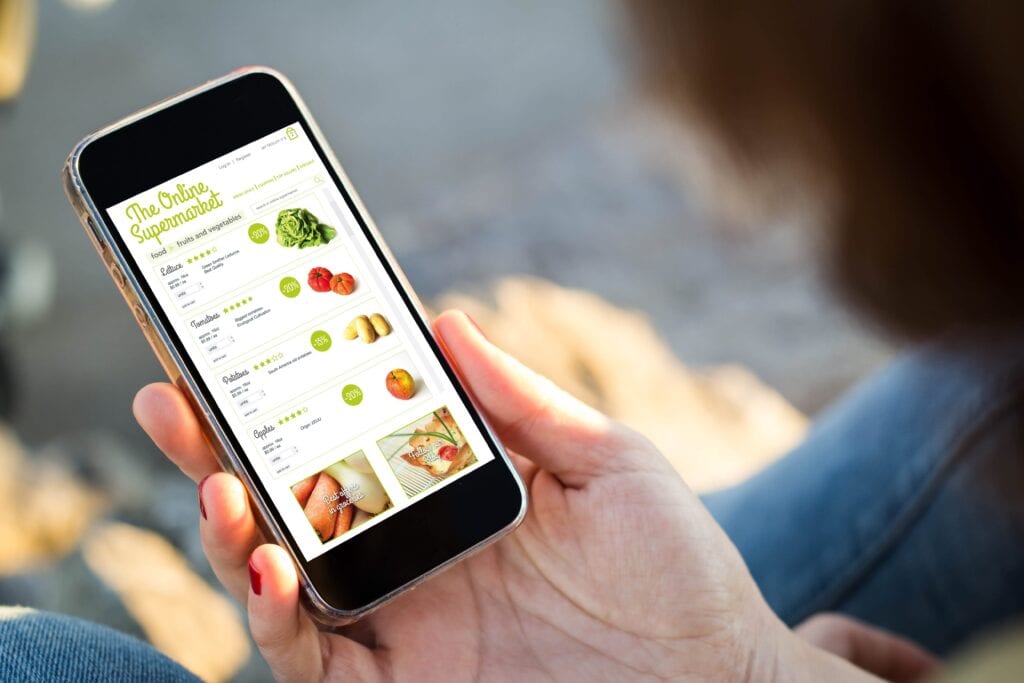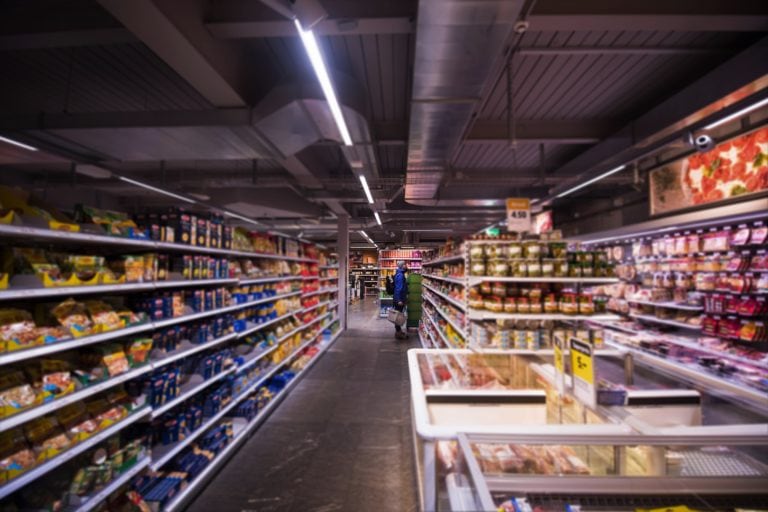Why Robot Hands Won’t Take Over the Warehouse Anytime Soon
Will robot hands take over the warehouse? Of course not! Vacuum …


Propelled by high demand from nationwide COVID-19 lockdowns, online grocery sales in the U.S. stand to surge by 40% this year, according to the Coresight Research U.S. Online Grocery Survey 2020.
No surprise. Perhaps more surprising:
“…In turn, more frequent online grocery shopping is leading people to shop at more retailers, as consumers reported making purchases from an average of 2.3 retailers online in the past 12 months, compared with 1.8 retailers last year. ‘It could indicate that the grocery e-commerce market remains partly up for grabs as shoppers continue to test the waters and have not yet settled on one online “favorite…”
Meet the “new normal”: a wave of newly online-savvy grocery buyers with broadened choices hungry for the best customer experience at the lowest possible prices.
Pre-pandemic, some online grocery operations were adjusting to new competitive demands by exploring the deployment of micro-fulfillment centers. By locating fulfillment closer to customers—whether a small freestanding Distribution Center or mini-warehouses added to the back of a store—grocers can get goods to customers faster for delivery or curbside pickup (particularly with robotic automation) and at the customer’s preference and convenience.

Micro-fulfillment has yet to replace the industry-standard approach of individual in-store pickers roaming store aisles. This manual process is costly and inefficient (given that the store is organized for retail shoppers and not high-volume picking). We got a taste of this during the pandemic, as online shoppers faced delayed delivery times due to the high volume of orders. And, frustration on all sides as pickers competed for space with socially-distancing in-store customers navigating temporary store traffic pattern requirements.
Post-pandemic, automated micro-fulfillment can take care of the majority of customer online orders and return in-store shopping to a more pleasant experience.
Two other interesting findings from the survey suggest ongoing challenges: continuously increasing order volumes and item variety (more SKUs in play).
Today, customers have more options, and expect ever-faster response times (hours not days) with lower prices.
All roads lead to reducing dependence on labor. Fulfillment systems across the board need to be more responsive without relying on labor, to respond to fast-evolving demographic, item-preference, and shopping-pattern changes. Online grocery operations need to speed throughput while dealing with the usual labor shortages and keeping workers safe. This need isn’t going away. People just aren’t scalable, period, certainly not for narrow-margin, unpredictable-demand, and rapidly scaling online-ordering operations.
The solution is not to throw more people at the problem, but to use your trained workforce more efficiently.
Industrial-strength robotic automation for fulfillment can help improve customer service while reducing labor and other operating costs. It involves a holistic approach to robotic automation that applies the right technologies at the right place in the fulfillment process to get the right goods to the right customers at the right time for both online and in-store consumer experiences.
In micro-fulfillment centers, human pickers operate in manual picking stations, where items are retrieved from bins and placed in individual bags or totes for delivery to customers. While mobile robots can play a role in transporting inventory totes to/from storage and may even carry completed orders to shipping, people are the picking engines in these facilities. Their hands and brains are the ideal tool for the relatively fine-grained task of picking—except workers are relatively slow even in ergonomically designed stations. There are now intelligent robotic pick cells that can substitute for that human picker, delivering higher throughput with significantly less down time. Production-scale systems are much more than a robot arm bolted to the floor. They are compact self-contained units that have a robot arm, a fixture that fits over the existing station, a vision system, and sophisticated AI software to pick from totes into orders. Humans become managers not pickers. Customers get their goods faster.

Store back rooms are small now with little room for items that sell only sporadically and shelf space for every category is at a premium. Grocers looking at their assortments would like to ship more items more often in less-than-case quantities, but this is an expensive use of labor at the upstream DCs. It’s often cheaper for the DC to pick a whole case of fancy olive oil and ship it to the store than it is to pick and handle one bottle. Grocers are constantly weighing the tradeoffs associated with break pack vs. full case picking on an item-by-item basis. At the DC there are associated costs for item breakage, re-shelving the now-open box, and it often takes longer to pick eaches out of a case than to just pick the full case. But, on the store side, having an expensive item with low turns taking up valuable shelf space, should you send the whole case, is problematic for the entire chain. Next-generation robotic store replenishment systems can autonomously pick individual items and inner packs on-demand faster and more accurately than traditional methods. It is now economical to pick, pack, and ship less-than-case quantities of items traditionally shipped in full cases to optimize store inventory. Robotic automation of break pack picking can deliver millions of dollars in labor savings and make additional categories of product realistically eligible for break pack processing.
Businesses doing fulfillment-as-a-service for multiple online grocery operations need as many SKUs on hand as possible to satisfy consumer demands. Eighty percent of the “stores” on Amazon are individual businesses that stock at Amazon, with Amazon handling fulfillment. An automation-forward company may spend $40M or more to implement an automated storage and retrieval system (ASRS) to help them better manage storage space, but our customers tell us that up to 20% is still underutilized. As items are picked for orders and replenished into distribution center inventory, items may be stored in multiple locations, which decreases storage utilization and can require handling multiple inventory totes to supply orders once the inventory is spread around. To combat this, companies often employ a consolidation team whose job it is to find inventory that is held in multiple locations and combine it. This frees up storage space in the system, but it is the definition of a non-value-added task. A better approach is to use a robot doing the consolidation of all items in totes with no penalty to the picking workflow, to start to close that ~$8 million gap.
At this point, traditional and even emerging automation for online grocery operations is focused on the storage and transport of inventory. Picking must be done by human workers and they are falling behind as consumers demand more grocery delivery and curbside pickup.

The technologies exist to augment both micro-fulfillment and centralized fulfillment grocery operations with industrial-strength robotics for high-volume operations. These include artificial intelligence, machine learning, computer vision, advanced sensing, and integrated robotics packaged into intelligent automation solutions.
Today, those robotic systems (more than just a robot dropped into a spot on the floor) make it possible to replicate, automate, and scale the picking-packing-sorting process for use in micro-fulfillment and store replenishment. With AI and ML, the process gets smarter and more independent as it operates, scaling more autonomously. Workers are freed from mundane, physically stressful, and sometimes dangerous activities.
Intelligent robotic picking solutions can dramatically reduce operating costs and improve facility throughput, while distancing workers and inoculating the business against labor shortages. New Robots-as-a-Service models make automation available to a broader swath of online grocery operations (no capital expense).
Don’t wait in making critical automation decisions today that could save your bacon—literally—in the near future.
Will robot hands take over the warehouse? Of course not! Vacuum …
In a recent webinar, “Unlock $20M Savings with Superior Efficiency: Robotic …
With a strong foundation of AI-driven robotics and a mission to …
Contact the BG Fulfillment Automation Sales Engineering Team to Learn How to:
Call +1 (833) 848-9900
or connect using our form.